EUROPEAN TRAVELS
This is a collection of photos from some of my travels in Europe.Oradour-sur-Glane
near Limoges, France
Oradour was a town in central France targeted by the Germans during the latter part of World War II. On June 10, 1944, elements of the 2nd SS Panzer Division ("Das Reich") rolled into town. The men were herded into barns and garages; the women and children were forced into the church. When Germans were finished, 642 civilians had been murdered and the town was in flames. The town of Oradour has been preserved in its ruined state as a memorial to the innocents.
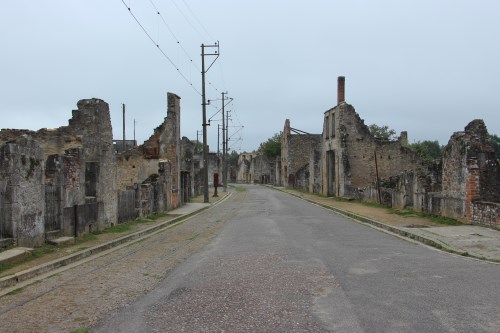 |
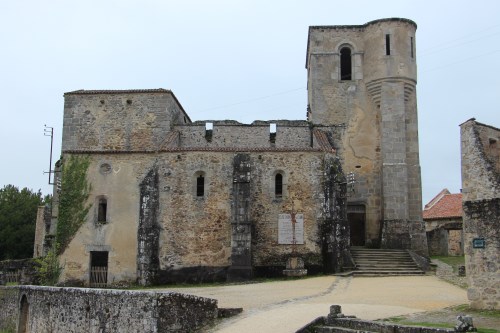 |
|
| View
down the main street in Oradour-sur-Glane. |
The
church where 452 women and children were murdered
by the SS. |
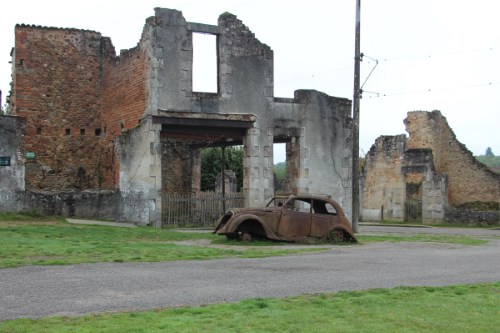 |
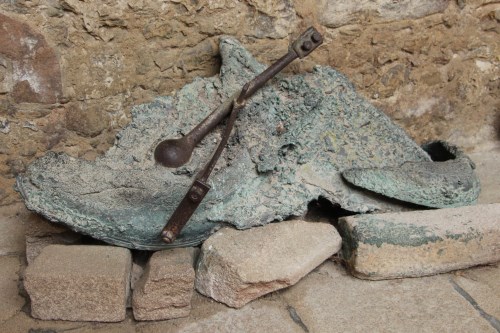 |
|
| Another
view of Oradour showing a burned-out building and a car. |
Bell
recovered from the church. The steel clapper has
survived but the brass casing has been severely
distorted by the heat of the fire. |
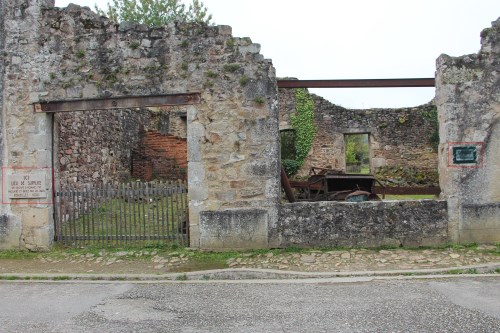 |
||
| Ruins
of one of the garages where men and boys were murdered. |
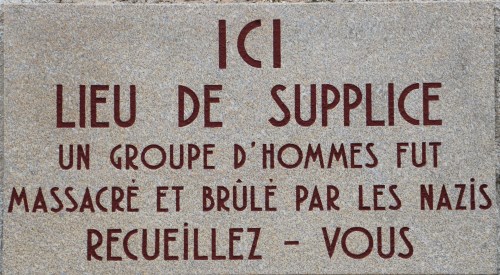 |
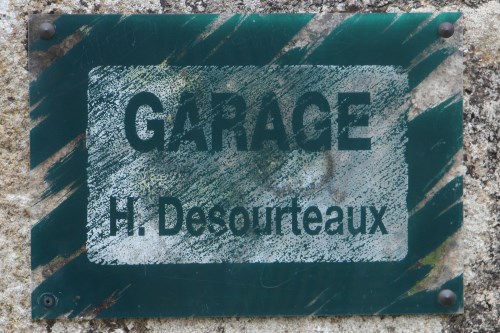 |
|
| Sign on
left side of garage (above) indicating that it was a
site where some of the men and boys were murdered. |
Sign on
the right side of the garage (above) indicating the
building's function and owner. |
Chartres Cathedral
Chartres, France
Chartres, France
Chartres Cathedral is is one of the best - and best preserved - examples of Medieval religious architecture.
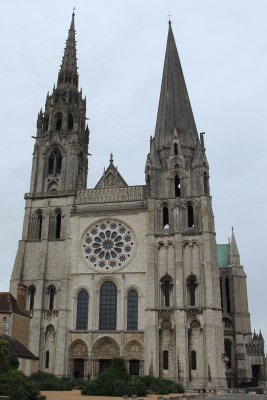 |
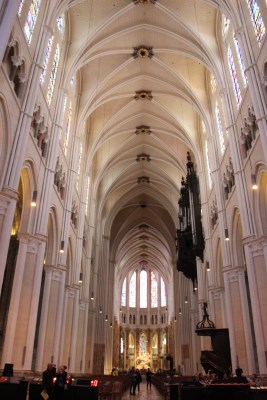 |
|
| Western
facade of Chartres Cathedral. |
Nave of
Chartres Cathedral. |
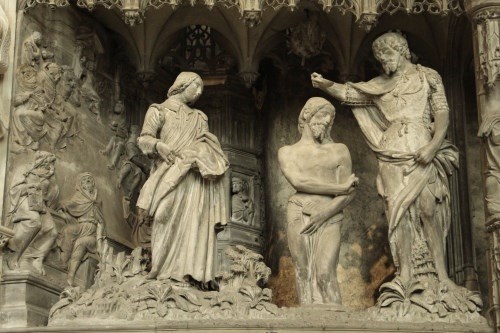 |
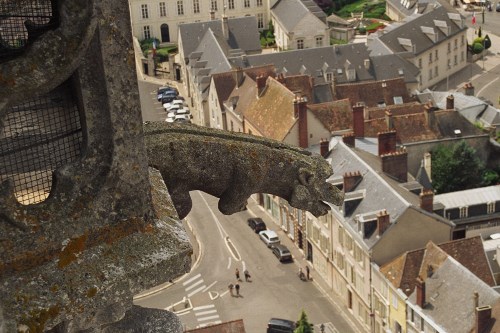 |
|
| Ambulatory
- Baptism of Jesus. |
Gargoyle/waterspout
on the North Tower. |
Normandy
Northern France
Normandy was the focus of two of the most significant invasions in the history of Europe: the Norman invasion of England in 1066 and the Allied invasion of northern France on June 6th, 1944 (D-Day). Many of the effects of the D-Day invasion have disappeared in the intervening decades, leaving monuments, museums, a few relics, and one's imagination to recall the devastation and ferocity associated with the event.
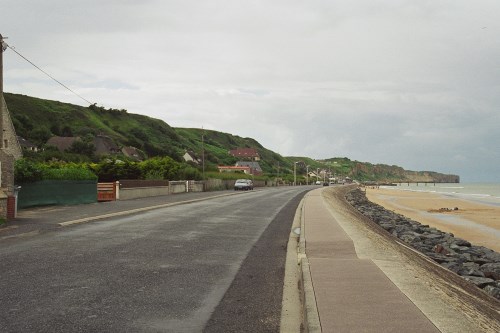 |
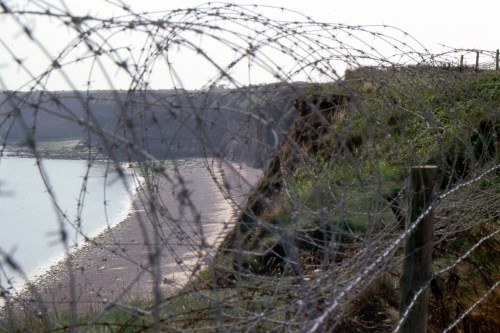 |
|
| Omaha
Beach circa 2003. |
Cliffs
and barbed wire at Pointe du Hoc. |
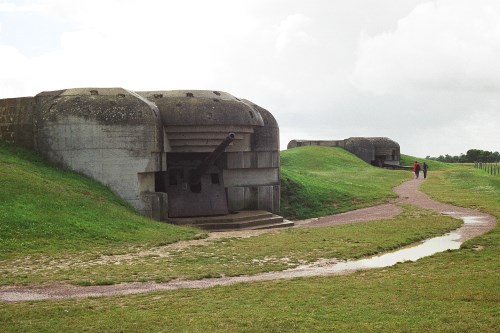 |
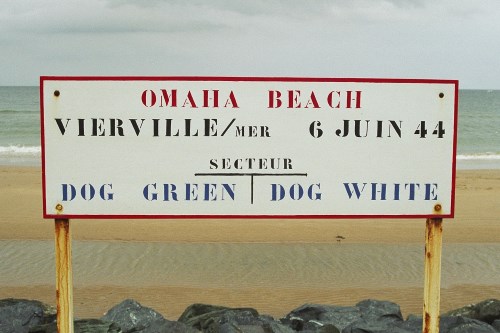 |
|
| German
gun emplacements at Longues sur Mer. |
Sign
on Omaha Beach indicating dividing line between
invasion sectors. |
Ravenna
Italy
Italy
Ravenna was the last capital of the decaying Western Roman Empire before it finally disappeared in the year 476. It was also where mainstream Christianity (Catholicism) and "heretical" Arianism co-existed for a while in the 5th and 6th Centuries. It boasts a collection of Byzantine mosaics. Among the mosaics are dueling baptism scenes inside the domes of a mainstream baptistery and an Arian baptistery illustrating their differing interpretations of Jesus' status.
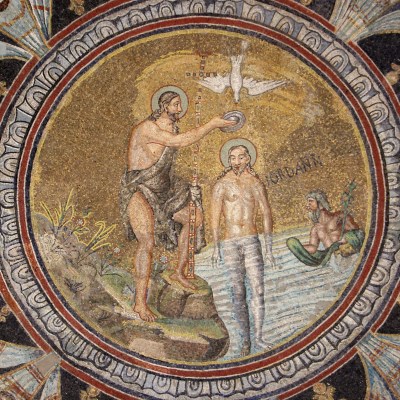 |
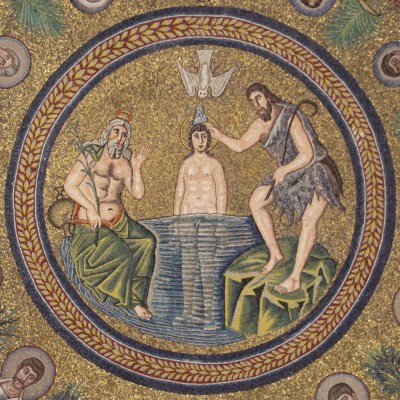 |
|
| Interior of the dome of the
Mainstream (Catholic) Baptistery. |
Interior of the dome of the
Arian Baptistery. |
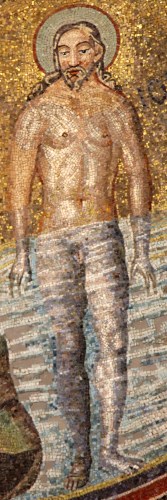 |
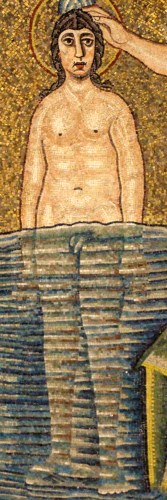 |
|
| Mainstream
Baptistery - Detail of Jesus. Jesus appears fit and capable. |
Arian
Baptistery - Detail of Jesus. Jesus appears dumpy and immature. |
La Bocca della Verità (The Mouth of Truth)
Rome, Italy
Rome, Italy
The Mount of Truth is a carving of a face on a disc that resides in a portico of the Church of Santa Maria in Cosmedin in Rome. It gets its name from the tradition that if you tell a lie while your hand is in the mouth of the carving, your hand will be cut off.
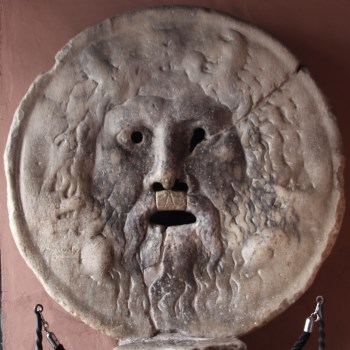 |
| The
Mouth of Truth. |
The Archbasilica of
St. John Lateran
Rome, Italy
Rome, Italy
The Archbasilica of St. John Lateran (San Giovanni in Laterano) is the Pope's home church. The land on which the basilica sits was donated by the Emperor Constantine in the 4th Century. Popes reigned from the basilica and resided in the Lateran Palace next door until the 14th Century, when the focus of the Catholic Church was moved, first to Avignon in France, then back to Rome, to its present location across town in Vatican City. The Archbasilica of St. John Lateran has been the site of several intriguing episodes in Church history, including the infamous Cadaver Synod in the year 897.
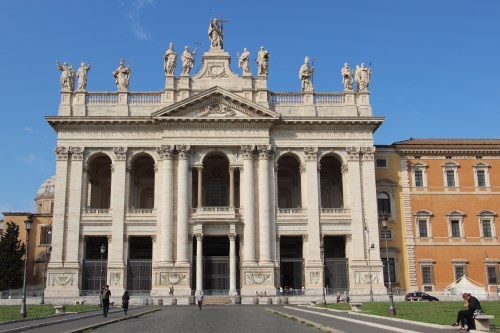 |
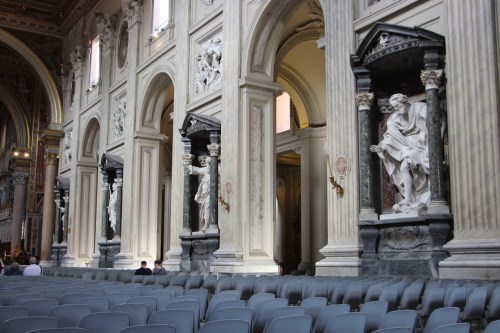 |
|
| Facade
of the Archbasilica of St. John Lateran. |
Statues
of Apostles along the side of the nave. |
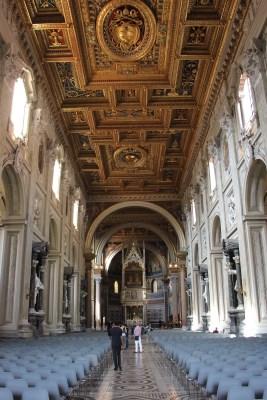 |
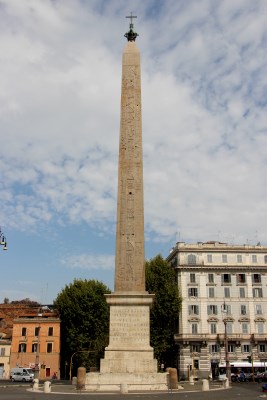 |
|
| The
nave of St. John Lateran. |
Obelisk
from the Temple of Karnak. |
The Church of St. Stephen In-The-Round
Rome, Italy
Rome, Italy
The Church of St. Stephen In-The-Round (Santo Stefano Rotondo) was one of the only churches of its type built in the 5th Century. It is known for a series of frescoes on its interior walls depicting various types of torture and death suffered by early Christian martyrs (added in the 16th Century).
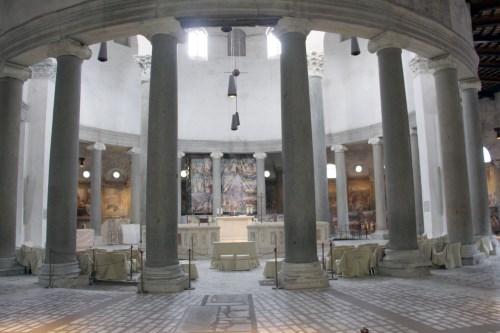 |
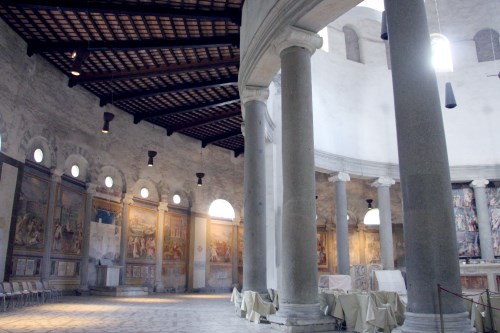 |
|
| Circular
architecture of St. Stephen In-The-Round. |
Ambulatory
with martyrdom frescoes on the wall. |
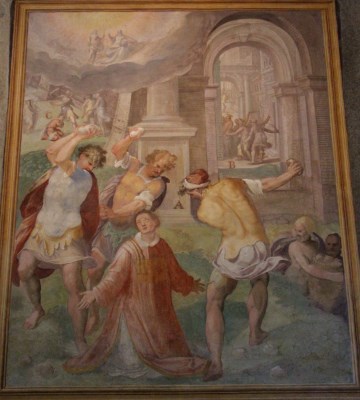 |
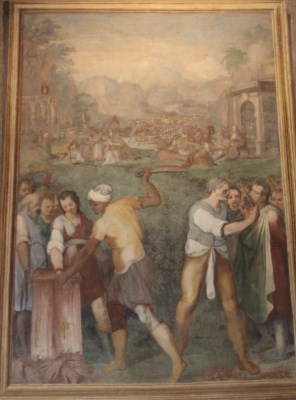 |
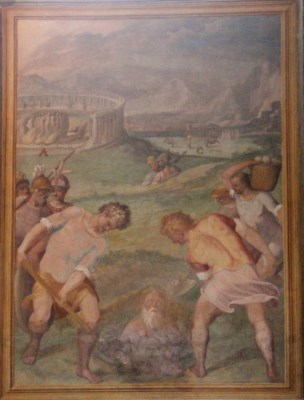 |
||
| St.
Stephen being stoned. |
Cutting
hands off and cutting tongues out. |
Being
buried alive. |
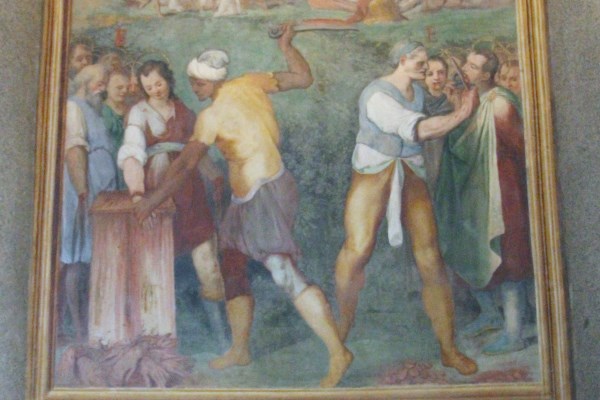 |
| Enlarged area of center fresco above showing detail of hand and tongue removal. Note piles of hands and tongues at bottom. |
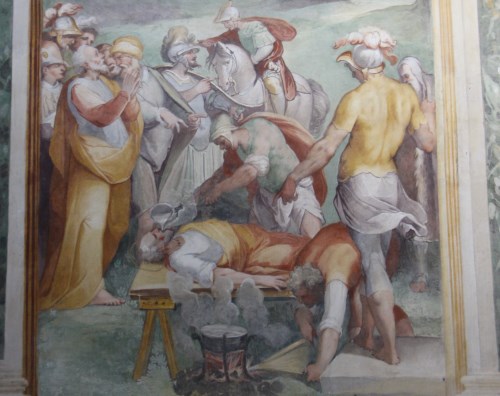 |
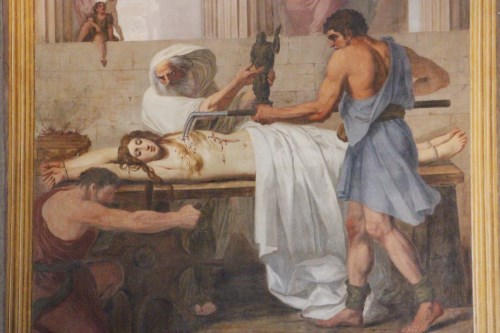 |
|
| Depiction
of molten metal being poured into a man's mouth. |
Woman
being tortured with a rake. The man behind her is
trying to get her to worship an idol. |
Santorini
Greece
Greece
Santorini is an archipelago composed of volcanic islands
with an included water-filled caldera. Its most recent major
eruption, 3600 years ago, put the finishing touches on a
very scenic Aegean destination.
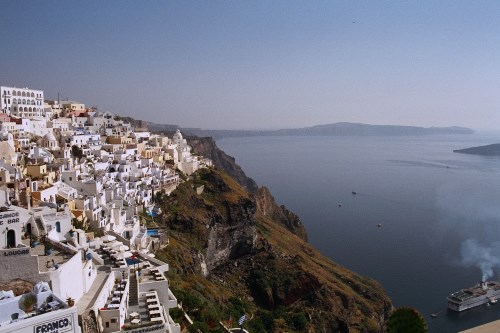 |
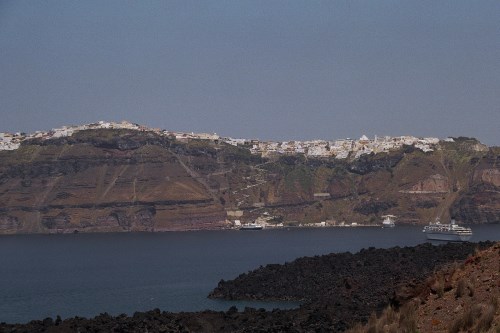 |
|
| Overlooking
the town of Thira and the water-filled caldera. |
The
town of Thira on top of the cliff as viewed from Nea
Kameni. |
Mount Olympus
near Litochoro, Greece
near Litochoro, Greece
Mount Olympus is the highest mountain in Greece and the
reputed home of the Ancient Greek gods. Three of its four
primary peaks are accessible to adequately-prepared
hikers/climbers.
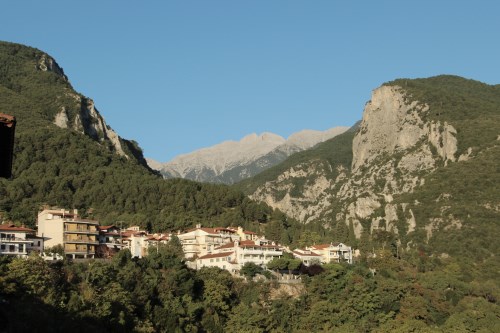 |
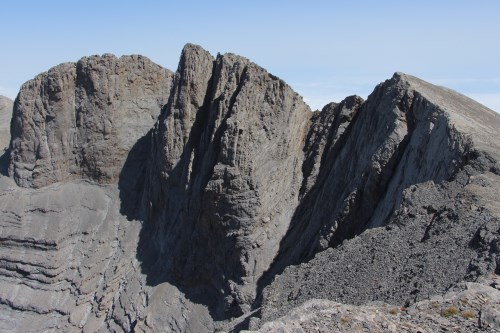 |
|
| Mount
Olympus in the distance as seen from the town of
Litochoro. |
Three
of the four principal peaks of Mount Olympus: Stefani
(left), Mytikas (center), and Skala (right) as seen
from the fourth peak, Skolio. |
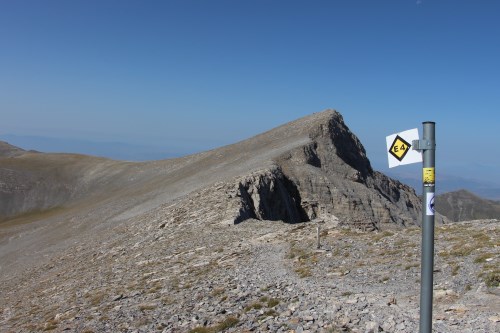 |
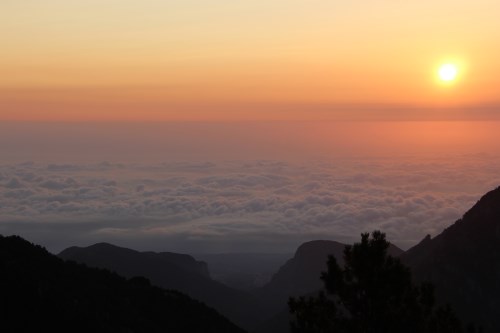 |
|
| Skolio
as seen from Skala. |
Sunrise
over a marine cloud layer on the northern Aegean Sea
as seen from Refuge A on Mount Olympus. |
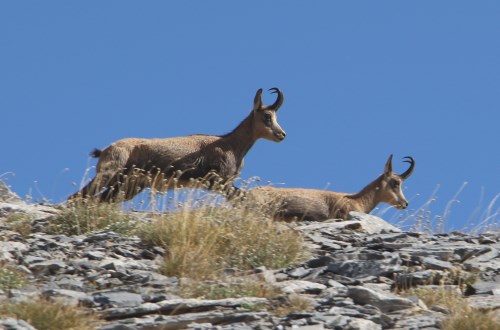 |
| Chamois above the
treeline on Mount Olympus. |
Delphi
Greece
Greece
Delphi, built into the side of a mountain, was the home of
the Oracle, the seer who foretold the future in Ancient
Greece. It was also the site of the Pythian Games, which
were second in importance only to the Olympic Games.
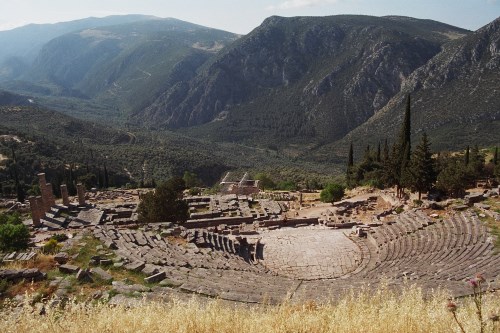 |
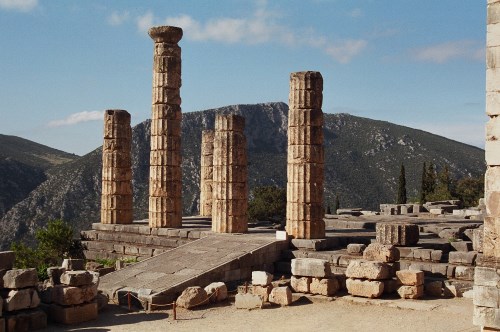 |
|
| View
from near the stadium at Delphi, over the theater and
Temple of Zeus, into the valley below. |
The
temple of Zeus, the seat of the Oracle. |
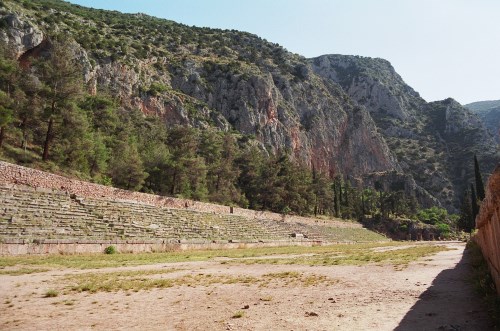 |
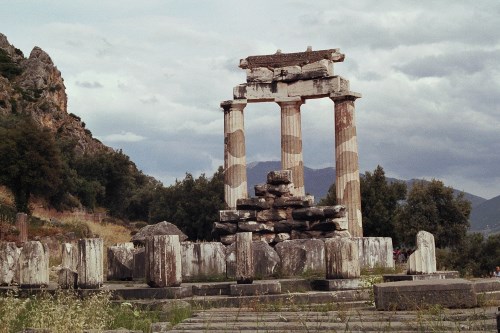 |
|
| Athletic
events of the Pythian Games were contested at the
stadium. |
The
Tholos at Delphi. It guarded the eastern entrance to
the sanctuary. |
Sagres
Portugal
Portugal
Sagres is located at the extreme southwest corner of
Portugal, which is also the extreme southwest corner of
Europe. In the 15th Century it was known as the End of the
World, the point beyond which nothing was known. Sagres
was the home of Prince Henry the Navigator and became the
focal point of emerging knowledge and technology related
to exploration of the African coast and the New World.
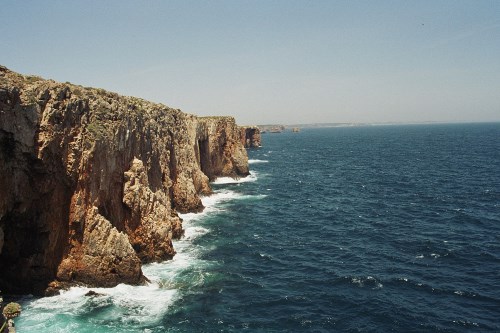 |
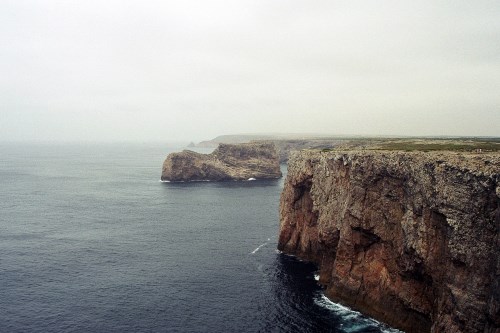 |
|
| Cliffs
on the coast at Sagres. |
Another
view of cliffs on the coast at Sagres. |
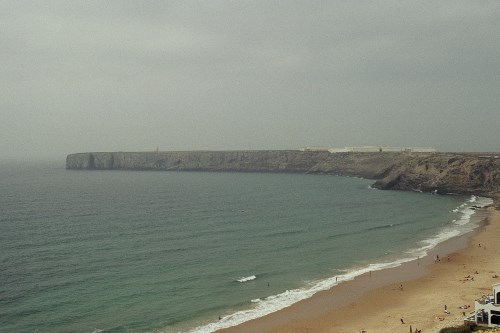 |
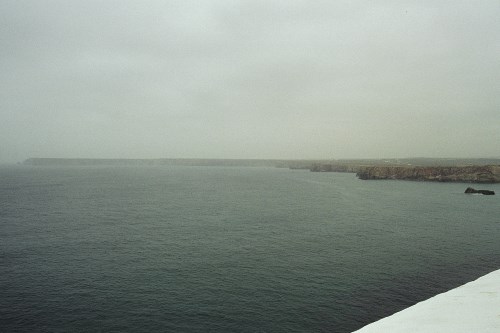 |
|
| The
Cape at Sagres. The Fortaleza (white) is on the right. |
Cabo
Sao Vicente in the distance as seen from the
Fortaleza. |
The End